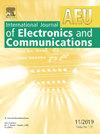Forward and inverse modeling of multiple input multiple output microstrip antennas for satellite communication using machine learning algorithms
IF 3.2
3区 计算机科学
Q2 ENGINEERING, ELECTRICAL & ELECTRONIC
Aeu-International Journal of Electronics and Communications
Pub Date : 2025-07-17
DOI:10.1016/j.aeue.2025.155951
引用次数: 0
Abstract
This article presents a supervised machine learning (SML) structure as a forward and inverse model for electromagnetic problems. For this purpose, we proposed ridge, lasso, elastic net, and K-nearest neighbor’s regression for both forward and inverse modeling tasks of duel port and four-port multiple-input multiple-output microstrip antennas for satellite communication. The duel-port and four-port multi input multi outputs microstrip antennas consist of three and two notched bands, respectively. In addition, The dual-port and four-port antennas achieved maximum notched frequencies at 6 and 8.2 GHz, respectively. We compare the results predicted by various ML techniques with those obtained from a high-frequency structure simulator(HFSS) to validate their accuracy. SML approaches are utilized to predict the mean square error (RMSE) and error of coefficient (RR) for both the physical and frequency parameters of dual-port and four-port microstrip antennas. However, the results obtained by K-nearest neighbor’s regression algorithms are significantly better than those from ridge regression, lasso regression, and elastic net regression.
基于机器学习算法的卫星通信多输入多输出微带天线正反向建模
本文提出了一种监督机器学习(SML)结构作为电磁问题的正、逆模型。为此,我们提出了脊法、套索法、弹性网法和k近邻回归法分别用于卫星通信中双端口和四端口多输入多输出微带天线的正、逆建模任务。双端口和四端口多输入多输出微带天线分别由三个和两个陷波带组成。此外,双端口和四端口天线的最大陷波频率分别为6 GHz和8.2 GHz。我们将各种ML技术预测的结果与高频结构模拟器(HFSS)获得的结果进行比较,以验证其准确性。利用SML方法预测了双端口和四端口微带天线的物理参数和频率参数的均方误差(RMSE)和系数误差(RR)。然而,k近邻回归算法得到的结果明显优于ridge回归、lasso回归和弹性网回归。
本文章由计算机程序翻译,如有差异,请以英文原文为准。
求助全文
约1分钟内获得全文
求助全文
来源期刊
CiteScore
6.90
自引率
18.80%
发文量
292
审稿时长
4.9 months
期刊介绍:
AEÜ is an international scientific journal which publishes both original works and invited tutorials. The journal''s scope covers all aspects of theory and design of circuits, systems and devices for electronics, signal processing, and communication, including:
signal and system theory, digital signal processing
network theory and circuit design
information theory, communication theory and techniques, modulation, source and channel coding
switching theory and techniques, communication protocols
optical communications
microwave theory and techniques, radar, sonar
antennas, wave propagation
AEÜ publishes full papers and letters with very short turn around time but a high standard review process. Review cycles are typically finished within twelve weeks by application of modern electronic communication facilities.

 求助内容:
求助内容: 应助结果提醒方式:
应助结果提醒方式:


